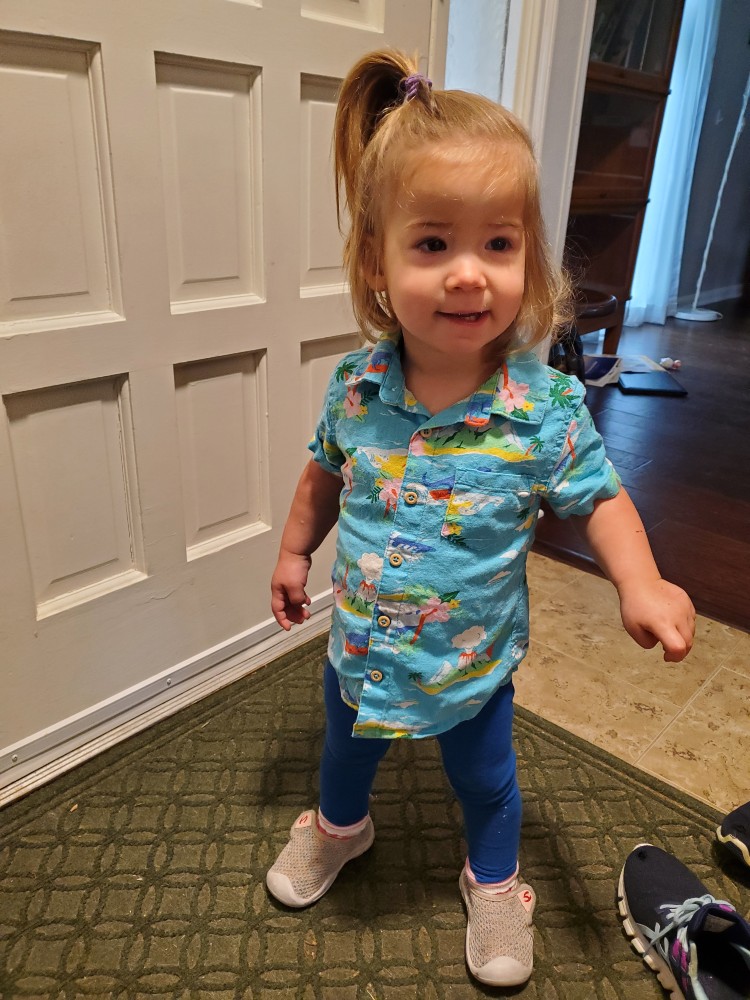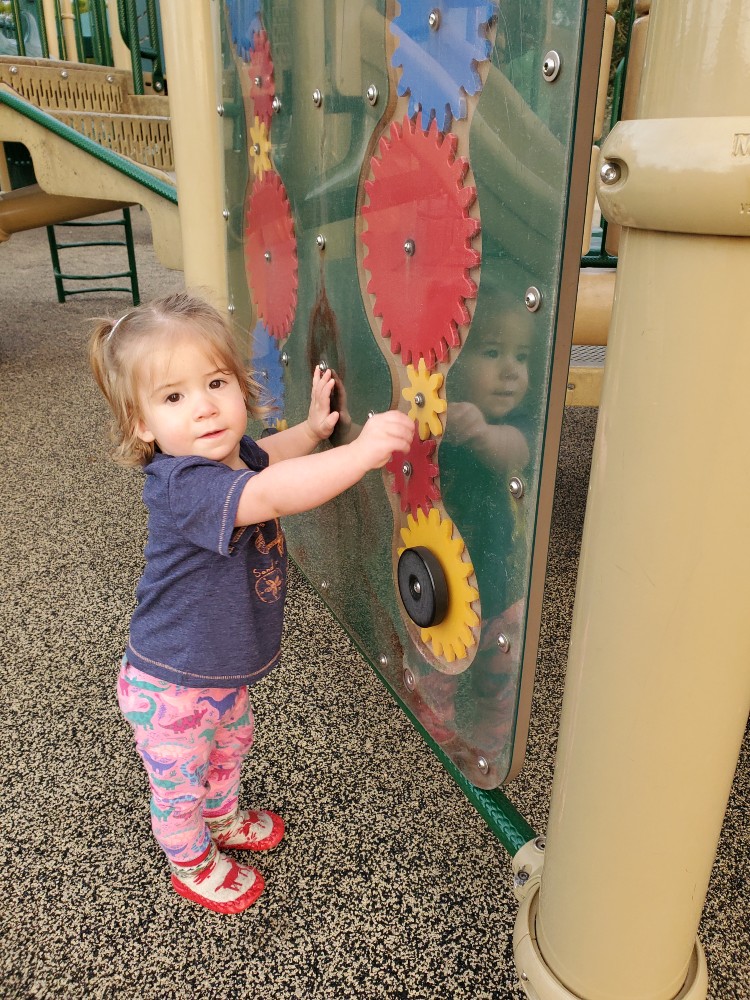
The doctor urged us to take her to a pediatric ER right away,” Rebekkah Sandt says. “Two hours earlier I had driven her to the office, and then there we were at Children’s Memorial Hermann Emergency Room at Memorial City, with Flora hooked up to oxygen waiting for the Pediatric Transport Team to take her to Children’s Memorial Hermann Hospital in the Texas Medical Center.”
At Children’s Memorial Hermann Hospital, they were met by an affiliated pediatric heart team that included Jorge Salazar, MD, professor and chief of pediatric and congenital heart surgery at McGovern Medical School at UTHealth Houston and executive co-director of the Children’s Heart Institute*, and Avichal Aggarwal, MD, an associate professor of pediatric cardiology at the medical school and affiliated with Children’s Memorial Hermann Hospital. “We learned that her heart was functioning at 17% capacity,” Sandt says. “I don’t know how she was surviving.”
“Flora had a ventricular septal defect – a large hole between the two lower chambers of her heart – and an abnormal right coronary artery,” Dr. Salazar says. “She was in critical condition with extreme heart failure, and the standard course of care at most children’s heart centers would be to add her name to a heart transplant list. But for our team, transplantation is not Plan A. It’s an option we use when we have no other choices. Our Plan A is to give the child a normal heart that will last a lifetime, rather than a transplant with a limited duration. We assessed the problem and saw a path forward that could allow Flora to live a normal life.”
In the operating room, Dr. Salazar closed the ventricle septal defect and repaired the anomalous right coronary artery, which was obstructing blood flow to the heart muscle. “This was a very high-risk surgery, but Dr. Salazar and I were persistent and had faith that if we fixed the defect and treated her with intensive medical treatment following surgery, she would improve,” Dr. Aggarwal says. “After surgery, her heart function was still very bad. She stayed in the pediatric intensive care unit for almost 12 weeks on multiple continuous intravenous (IV) medications and we watched her fluid status very carefully.”
For the first two weeks, the Sandt family took turns staying overnight at the hospital. “We didn’t want her to be alone, even though the nurses and staff were wonderful. Finally, they pointed out that a hospital is a hard place to get a good night’s sleep and that we didn’t need to stay overnight,” Sandt says. “Instead, we went every day for eight hours, or as long as we could stay.”

Flora went home in April 2021 and was prescribed a continuous IV infusion that included a combination of two medications for patients that have heart failure. Normally given in the ICU, this mixture requires close attention. “There was a lot of collaboration with the ICU infusion team and clinic staff to ensure that we were all comfortable continuing the IV medicine at home, and Rebekkah did a great job of managing it to give Flora a good outcome and avoid a heart transplant,” Ortiz says.
“Dr. Aggarwal was always available to answer our questions, and a home health nurse came twice a week to change the bandage over the PICC line and make sure the stitches were holding it in place. Flora was on a lot of oral medications, in addition to the infusions, and her immunity was not strong, so she was prone to infection. But over time, with meticulous medical therapy, Flora’s heart function began to improve,” Sandt says. Flora spent a total of six months on this infusion.
A little less than three months later, Flora was hospitalized for treatment unrelated to her heart. “By then, her heart was functioning at 40% capacity, and Dr. Aggarwal decided she didn’t need her PICC line any longer because she was doing so much better,” she says. “It was a huge relief not to have the PICC.”
“Flora came in for blood work regularly, and Clarissa kept us all informed about her lab results. She did an excellent job,” Dr. Aggarwal says. “Dr. Salazar fixed her heart, and then we had to be very, very patient after surgery to allow the heart to rebuild itself from the inside. We had a lot of little successes along the way, but our biggest success is that Flora has her own heart.”
During the months she worked with the Sandts, Ortiz got to know the family well. “For me, it was really nice to follow up on the outpatient side and in clinic,” she says. “The entire team had developed a bond with them, and they trusted that we were providing the best care possible. Rebekkah and Justin took superb care of Flora, and she started gaining weight, growing hair and hitting all her milestones. Even now when we see each other, it’s very, very sweet.”
Flora, who is now two years old, continues on oral medications. “She’s doing great,” her mother says. “She took a while to walk but now she climbs stairs and is always on the go. She has a great appetite and lots of energy. It’s been a long process, but here we are. What a little miracle she is! We are so grateful for the care and support we received from Dr. Aggarwal, Clarissa and Dr. Salazar, and we’re so very happy they took a chance on Flora.”
Learn more about services provided at the Children’s Heart Institute and heart heroes like Flora »
Contact Us
To contact Children’s Heart Institute at Children’s Memorial Hermann Hospital, please fill out the form below.
The Children’s Heart Institute is a collaboration between the affiliated physicians at McGovern Medical School at UTHealth Houston and Children’s Memorial Hermann Hospital. Typically, patients are seen on an outpatient basis at a UT Physicians clinic with all inpatient procedures performed at Children’s Memorial Hermann Hospital.
The facts and the physician affiliations discussed in this article were confirmed at the time of the article’s original publication.